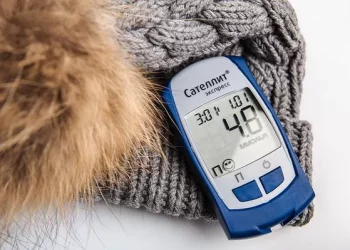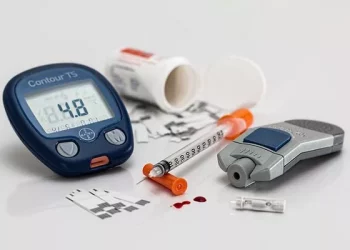A German clinical study has found that daily consumption of a polyphenol-rich red berry juice, containing 25% chokeberry, significantly improves blood vessel function and may help prevent muscle loss during high-intensity exercise in people with pre-diabetes. The findings, published in Nutrition, Metabolism, and Cardiovascular Diseases, suggest a simple dietary strategy to support vascular and muscular health in this at-risk population.
Chokeberry’s Potent Polyphenols: A Natural Ally Against Pre-Diabetes
Chokeberry (Aronia melanocarpa) is renowned for its high concentration of polyphenols — plant-derived compounds known for their antioxidant and anti-inflammatory properties. Previous studies have highlighted chokeberry’s ability to reduce fasting blood glucose and glycated hemoglobin levels in diabetic patients. With antioxidant capacities exceeding those of blueberry, cranberry, and even red wine, chokeberry juice has emerged as a potential tool to halt the progression from pre-diabetes to type 2 diabetes.
In this context, the German research team sought to evaluate whether chokeberry-rich juice could deliver tangible health benefits in pre-diabetic individuals, particularly focusing on vascular health, muscle mass preservation, and metabolic parameters.
Study Design: Two-Pronged Approach with and without Exercise
The study involved two crossover trials with ten pre-diabetic participants each. The first phase (Study Section A) examined the effects of a 14-day red berry juice regimen without exercise, while the second phase (Study Section B) combined juice consumption with high-intensity concurrent strength and endurance training. Each phase included washout periods to prevent carryover effects.
In both trials, participants consumed 200 mL of the polyphenol-rich red berry juice twice daily, or a placebo drink designed to match taste and appearance. Exercise sessions in Study Section B incorporated brisk walking and strength exercises following structured EMOM (Every Minute on the Minute) and AMRAP (As Many Repetitions As Possible) formats.
Researchers measured outcomes related to vascular resistance, arterial stiffness, glucose metabolism, oxidative stress, and body composition.
Key Findings: Vascular Benefits and Muscle Preservation
Results from Study Section A revealed a significant reduction in peripheral vascular resistance after 14 days of red berry juice intake. This effect was not observed in the placebo group. Interestingly, improvements in arterial stiffness were noted across both groups, likely influenced by the high potassium content present in both the juice and placebo drinks.
In Study Section B, participants engaging in high-intensity training exhibited contrasting muscle mass outcomes depending on beverage intake. Those in the placebo group experienced a slight reduction in relative muscle mass, while no such decline occurred in participants consuming the red berry juice. This suggests that chokeberry polyphenols may exert a protective effect against muscle degradation during strenuous exercise.
The study’s dietary recall indicated suboptimal protein intake in both groups, which might have influenced the muscle mass results. Nevertheless, polyphenols’ established role in mitigating muscle atrophy through pathways like PI3K/Akt/mTOR adds credence to the juice’s muscle-preserving potential.
Mechanisms and Implications
Researchers attributed the observed vascular improvements to the polyphenol-induced enhancement of gut microbiota diversity, reduction in oxidative stress, and increased nitric oxide bioavailability — a potent vasodilator that supports healthy blood flow.
The muscle-preserving effects may stem from polyphenols’ capacity to inhibit exercise-induced oxidative damage and inflammation, common contributors to muscle loss, especially in individuals unaccustomed to high-intensity training.
Limitations and Future Directions
While the findings are promising, the study’s small sample size and short intervention period limit the generalizability of results. Additionally, reliance on bioelectrical impedance analysis (BIA) for body composition measurement — as opposed to more precise techniques like DXA — may affect accuracy.
The researchers recommend larger, long-term studies to better understand the mechanisms and confirm the efficacy of chokeberry juice as a preventive nutritional strategy against vascular dysfunction and muscle loss in pre-diabetic populations.
Related topics:
New Study Identifies Key Mechanism Behind Insulin Resistance in Obese Adolescents
Grant Opportunity: Advancing Early Detection in Adult-Onset Type 1 Diabetes
New Subtype of Monogenic Diabetes Discovered by MDRF and U.S. Researchers

























